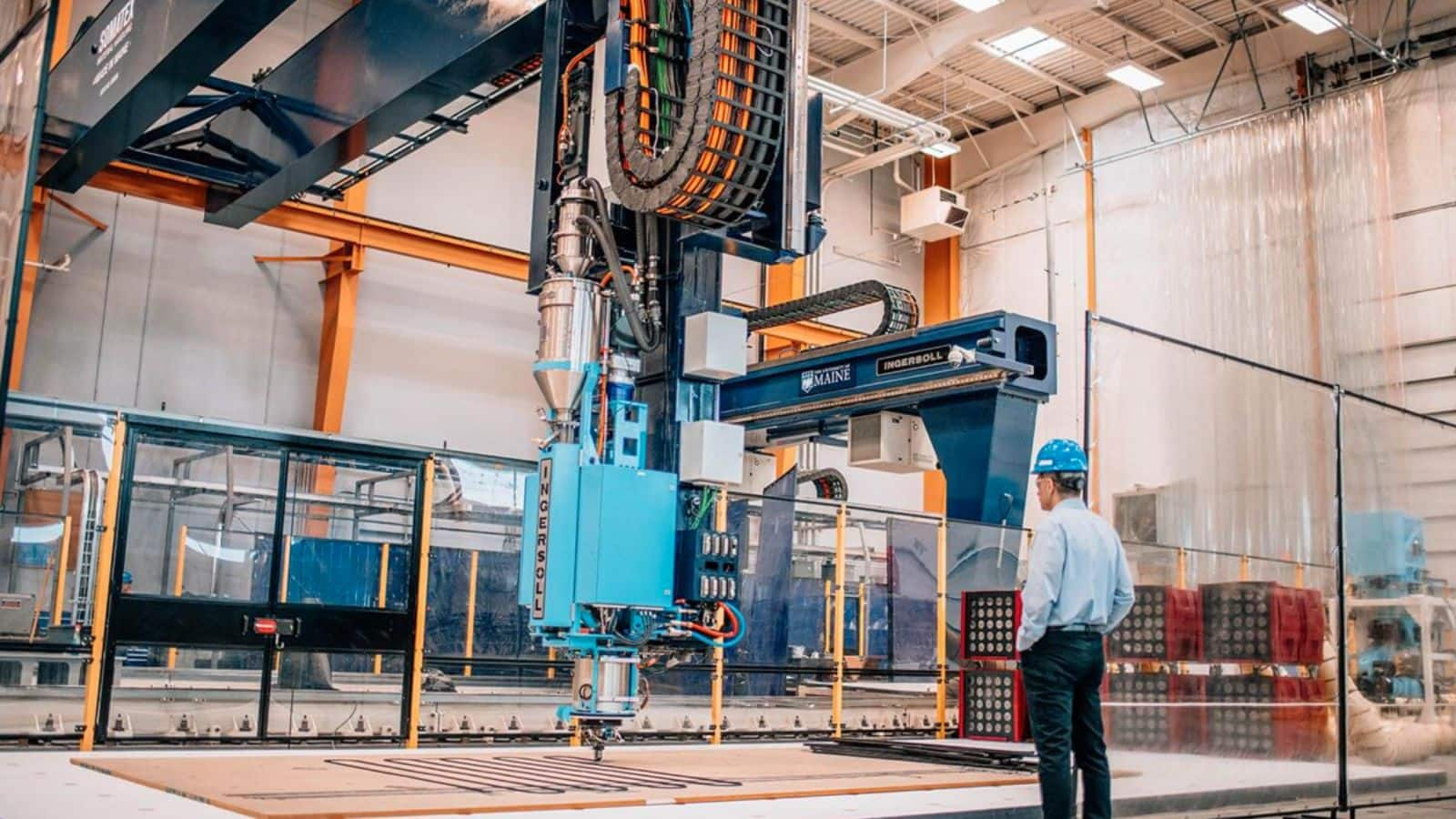
World's largest 3D printer can build home in 80 hours
What's the story
The University of Maine has made headlines by unveiling the world's largest polymer 3D printer, named the Factory of the Future 1.0 (FoF 1.0). This groundbreaking machine can create objects up to 96-feet long, 32-feet wide, and 18-feet high at a remarkable speed of up to 226kg per hour. The FoF 1.0 is unique due to its ability to switch effortlessly between different printing methods such as large-scale additive manufacturing, subtractive manufacturing, continuous tape layup, and robot arm operations.
Multi-sector impact
It can be used in various sectors
The versatility of FoF 1.0 makes it a valuable tool for various sectors, including housing, infrastructure, and military vehicle production. Dr. Habib Dagher, who leads the Advanced Structures and Composites Center at the University of Maine, highlighted that most materials produced by the printer can be recycled. "You can basically deconstruct it, grind it up if you wish" and "do it again," said Dagher. This feature enhances its potential for sustainability in manufacturing processes.
Housing solution
Solution for producing quality affordable-housing
The FoF 1.0's potential for rapidly creating affordable housing has been recognized by many supporters. Mark Wiesendanger from MaineHousing noted that "Maine needs an estimated 80,000 additional homes by 2030," and expressed his belief that this technology could be a solution for producing quality affordable housing while reducing costs. The printer's capabilities suggest it could construct a single-story home in approximately 80 hours, offering a promising solution to the state's housing shortage.
Defense applications
Potential applications in defense
Beyond housing, the FoF 1.0 printer has potential applications in defense. The project received funding from the Army Corps of Engineers, the Department of Defense, and the Department of Energy who anticipate seeing returns on their investment. The FoF 1.0 is expected to be used to produce lightweight vessels such as submarines and other maritime vehicles quickly. Senator Susan Collins referred to the printer as being "invaluable to our national security," highlighting its strategic importance.
Future prospects
The future of 3D printing in construction
The University of Maine has plans to establish a new research lab, the Green Engineering and Materials (GEM) Factory of the Future, which will house both the FoF 1.0 and its predecessor. The main goal of this new facility is to "facilitate and scale up more sustainable manufacturing practices." Dagher hinted at future developments by stating they are "learning from this to design the next one," suggesting the possibility of even larger printers being developed in the future.